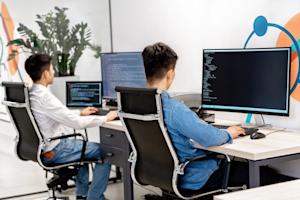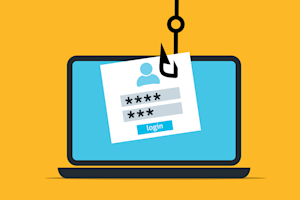Mitigating cybersecurity attacks is becoming more challenging, plus the rise in remote work adds an extra layer of complexity to security. Man-in-the-middle attacks and spear phishing campaigns are on the rise, so it’s important for everyone to stay vigilant and understand the right steps to take to ensure data protection—both personally and professionally.
Using Remote Access Software Securely
When used correctly, sharing data from one computer to another through remote access software is just as secure as using one computer in person. Think of using remote access software as an extension of an existing device—following cybersecurity best practices when using remote access software helps to protect your team from most cybersecurity threats.
When choosing remote access software, consider the ones that are compliant with major security regulations and compliances. Legal regulations such as GDPR and SOC2 compliance require software companies to stay within a certain set of guidelines when it comes to personal data and how information is stored and protected. Be sure that the software you choose meets these requirements to maintain security.
How to Protect Data in the Era of Remote Access
Introducing remote access to your workspace shouldn’t make a huge difference in your team’s day-to-day when it comes to security. Here are three things you can do to protect data security.
Establish a Foundational Remote Access Policy
When implementing a remote access policy for the first time, it’s essential to set the groundwork for your employees about what behavior is acceptable and what isn’t acceptable when working remotely. For example, you might want to limit what kind of networks your employees can connect to. Working in a coffee shop or on a public network may cause some concerns regarding security—which is why it’s important to dictate this kind of information in a remote access policy.
When onboarding your employees onto your new remote access software, be sure to provide clear, step-by-step instructions on what software you’re using, what it looks like, and how it works. If your IT team uses a different software for remote access, ensure employees know what that process looks like. This can help mitigate any potential spear phishing attempts and downloads of other suspicious software that can affect data security.
Maintain Regular Secure Data Processes—Even for Non-Remote Access
Creating general, consistent data policies will help strengthen security practices when working remotely. While it’s important to look at remote access specifically, adopting general security policies as a whole will do a lot to mitigate potential threats.
For example, classifying important company data to a need-to-know basis can minimize the window of opportunity for cybercriminals to attack. When you reduce the number of employees who can access certain information, this minimizes the number of targets a criminal can target.
Enacting regular security updates such as consistent password changes and requiring multi-factor authentication ensures that the right people are accessing the right data. You can even take this a step further and require an external USB security device, such as a Yubi key, to ensure that several layers of verification are required to access specific data.
When you apply this level of security when you are accessing devices remotely, you create a whole infrastructure of security that is challenging to get through if you are not verified. Applying these best practices in-person and ensuring employees follow these rules regularly helps to establish good security habits. The better your employees' security habits, the more secure your data remains whether you’re working in-person or remotely.
Use Simple and Secure Remote Access Tools
When using remote access software, it’s important to know if the data transferring between the two devices is encrypted both in-transit and at rest. The right remote access software needs to be easy to use for everyone involved—from IT leaders all the way down to an employee working remotely.
The simplicity of a remote access tool is important; you don’t want it to be overly complicated for your employees to access what they need. An overcomplicated product can lead to frustrations, an increase in ticket calls to IT, and accidental misuse of the software. When your employees don’t know how to use the remote access software correctly, this can create vulnerabilities in your process.
Keeping Data Secure with Splashtop Enterprise
When crafting a remote access policy, be sure to consider Splashtop Enterprise as an option. Splashtop Enterprise provides remote access for employees, while also providing key features for remote support dedicated for maintaining and enhancing the IT team’s efficiency. Splashtop Enterprise is also compliant with major regulations such as SOC2 and ISO/IEC 27001, while maintaining an easy-to-use interface and preventing an unnecessarily complicated tech stack for IT teams.
Interested in seeing how Splashtop Enterprise can help your team? Chat with one of our sales representatives to see how Splashtop Enterprise can help provide your team with remote access while ensuring your data protection.





